Of all the so-called superfoods — the nutrient-rich foods high in antioxidants that are thought to fight the ills of aging — few receive more accolades than the berry family. From humble blueberries to their exotic cousins from distant climes, berries have muscled out other super fruits to take a firm stand front and center. Sure, orange fruits and dark leafy greens get their fair shake, but the berries seem to steal the show.
And what about all the other berries that are regularly slapped with the “miracle” label by food marketers and importers? Although many of the exuberant health claims have yet to be confirmed, the bulk of berries are loaded with important nutrients that can go far in combatting common deficiencies that may be making you feel less than peppy. With that in mind, here are a few lesser-known members of the super berry world.
Açai berry
One of the earliest contenders in the miracle-food market, açai berries are harvested from açai palm trees native to the rain forests of South America. In the Amazon the berries are beaten into a pulp, diluted in water and eaten with manioc, meat, fish or dried shrimp. Proponents purport that this little berry can tame arthritis and cancer, help with weight loss and high cholesterol, give a boost to erectile dysfunction, aid detoxification and provide overall health exuberance.
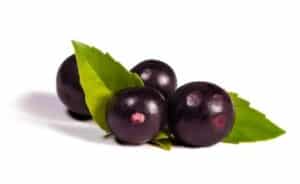 Açai berries have proven to be a good source of antioxidants, fiber and heart-healthy fats, but research has yet to prove much else. Açai can be eaten raw, in capsules, in beverages such as juice, smoothies or energy drinks, and other food products. It is often sold as a frozen pulp. Its popularity in North America has had an unintended consequence: there is less of this healthy staple for native and often poor populations who have relied on it for generations, according to Bloomberg. [Related: Is the 'miracle berry' a gimmick or a nutritional powerhouse?]
Açai berries have proven to be a good source of antioxidants, fiber and heart-healthy fats, but research has yet to prove much else. Açai can be eaten raw, in capsules, in beverages such as juice, smoothies or energy drinks, and other food products. It is often sold as a frozen pulp. Its popularity in North America has had an unintended consequence: there is less of this healthy staple for native and often poor populations who have relied on it for generations, according to Bloomberg. [Related: Is the 'miracle berry' a gimmick or a nutritional powerhouse?]
Acerola cherry
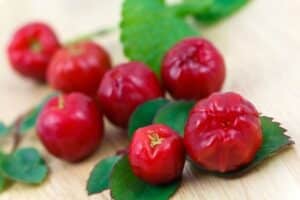 Known scientifically as Malpighia emarginata, and commonly as acerola, Barbados cherry, West Indian cherry and wild crepemyrtle, this shrub is native to South America, southern Mexico and Central America, but is now also being grown as far north as Texas and in subtropical areas of Asia. The fruit is bursting with vitamin C — about nine times the vitamin C found in a typical orange. It is most commonly available in juice, powder or supplement form. [Related: What can acerola do for you?]
Known scientifically as Malpighia emarginata, and commonly as acerola, Barbados cherry, West Indian cherry and wild crepemyrtle, this shrub is native to South America, southern Mexico and Central America, but is now also being grown as far north as Texas and in subtropical areas of Asia. The fruit is bursting with vitamin C — about nine times the vitamin C found in a typical orange. It is most commonly available in juice, powder or supplement form. [Related: What can acerola do for you?]
Goji berry
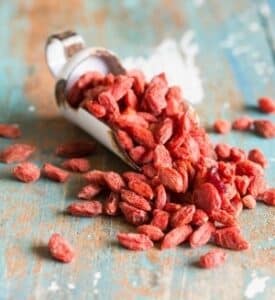 Also known as lycium or Chinese wolfberries, these go-to berries for the superfood set are native to the Himalayan region of China and Tibet. The small, red berries have been used by Chinese herbalists for millennia to help eyesight, boost immune function and promote longevity. Although there are few published clinical trials, many of goji berries’ reported health benefits are related to their high antioxidant concentration.
Also known as lycium or Chinese wolfberries, these go-to berries for the superfood set are native to the Himalayan region of China and Tibet. The small, red berries have been used by Chinese herbalists for millennia to help eyesight, boost immune function and promote longevity. Although there are few published clinical trials, many of goji berries’ reported health benefits are related to their high antioxidant concentration.
They have remarkable levels of vitamin C, beta carotene, amino acids, iron and B vitamins. Available dried, they taste kind of like a dried cherry with a slight metallic and salty tinge; they are also available is powder, juice or supplement form. They travel a long way to get to North America, though, so love them sparingly. [Related: Goji berries: Health benefits, tips and recipes]
Maqui berry
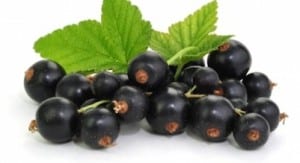 Maqui berry is a deep purple berry that grows wild throughout parts of southern Chile. The tart and flavorful fruit contains an abundance of vitamin C, calcium, iron and potassium, anthocyanins and polyphenols, and anti-inflammatory compounds. Long consumed in whole and juice form, maqui is now found in a number of dietary supplements (including powders, capsules and juice blends). [Related: Simple superfood fudge truffles]
Maqui berry is a deep purple berry that grows wild throughout parts of southern Chile. The tart and flavorful fruit contains an abundance of vitamin C, calcium, iron and potassium, anthocyanins and polyphenols, and anti-inflammatory compounds. Long consumed in whole and juice form, maqui is now found in a number of dietary supplements (including powders, capsules and juice blends). [Related: Simple superfood fudge truffles]
Noni berry
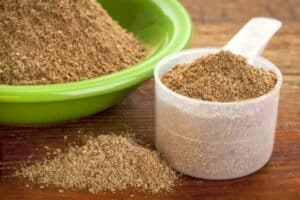 The noni berry is the fruit of the evergreen shrub known as canary wood, which is native to tropical areas of the South Pacific. The green fruit, leaves and rhizomes were long used used in Polynesian cultures to treat menstrual cramps, bowel irregularities, diabetes, liver diseases and urinary tract infections. Noni is available in powdered pulp or juice form, but many of the nutrients are lost when the fruit is juiced. The main micronutrients of noni pulp powder include vitamin C, niacin (vitamin B3), iron and potassium, with lesser amounts of vitamin A and calcium. However, the juice only retains the vitamin C, and at levels about half as much as orange juice. [Related: Why not make your own energy drink?]
The noni berry is the fruit of the evergreen shrub known as canary wood, which is native to tropical areas of the South Pacific. The green fruit, leaves and rhizomes were long used used in Polynesian cultures to treat menstrual cramps, bowel irregularities, diabetes, liver diseases and urinary tract infections. Noni is available in powdered pulp or juice form, but many of the nutrients are lost when the fruit is juiced. The main micronutrients of noni pulp powder include vitamin C, niacin (vitamin B3), iron and potassium, with lesser amounts of vitamin A and calcium. However, the juice only retains the vitamin C, and at levels about half as much as orange juice. [Related: Why not make your own energy drink?]
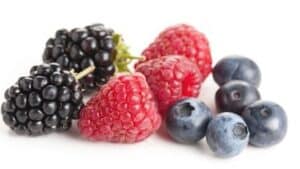
Adapted from Superfoods: 11 berries to improve your health by Melissa Breyer, reprinted by permission. Of course, the more common berries — blueberries, blackberries, cranberries, and strawberries have amazing benefits as well. Read about them in the entire article on Mother Nature Network.
- For lots more features on healthy lifestyle, explore VegKitchen’s Healthy Vegan Kitchen page.



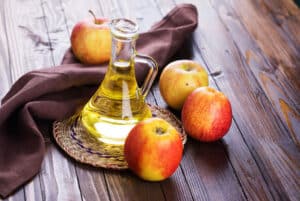
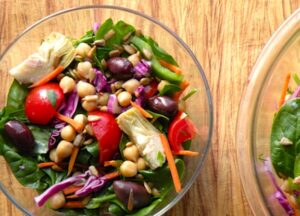
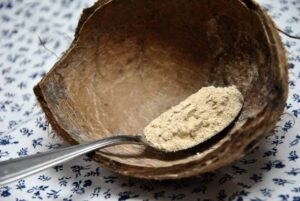
Comments
No Comments